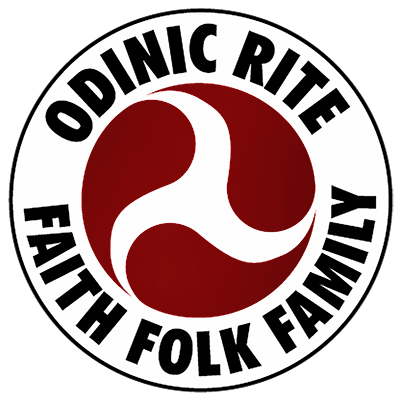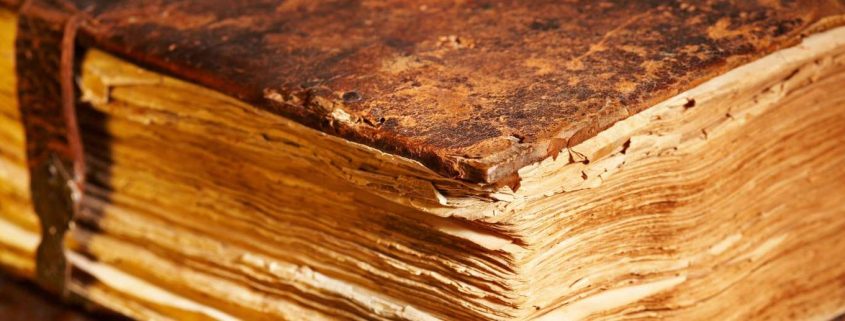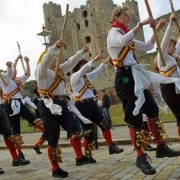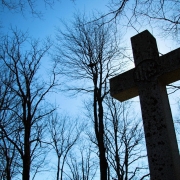Vedic – Eddic – Avesta : Part 1
By Egil Bamberger AOR & Hodr Fabian AOR
Upon opening ORBriefing, issue 219 Autumn 2261 pg.3 we read “The ancient Vedic texts written by our ancestors contain much of this wisdom …” The key word being “Vedic”, which may be a question in some folks mind? Some may suppose this was a misprint and should have read “Eddic” , but such is not the case as it will be revealed in this series of articles. Kudos to Eowyn OR, who inspired the writing of this article as we read “Health and Spirituality an Introductory Guide to Policy and recommended Practice For Odinists”
This is not a new topic for Irmining’s Hearth AOR members, while studying Vedic texts through Viktor Rydberg and the Norroenna Society. We also received correspondence from Heimgest DCG regarding the advancement of our Holy Religion and the basic core beliefs of the Odinic Rite for members. Heimgest DCG writes, “We hold Odinism to be the modern manifestation of the ancient ancestral wisdom as expressed in the Vedas. It is the modern expression of the Ancient wisdom of the Northern Indo European folk, known as Aryan. We hold that all those who derive from this folk unit are “our folk”. The various divisions such as Germanic, Celt, Balt etc. are really different linguistic families of the same extended folk family of the Northern Indo European or Aryan people. We naturally hold that our ancestral religion is as ancient as our folk unit and is not chained to any one period. It is NOT therefore the Norse religion, it is the religion which the Norse followed, but they are just one patch on our folkish quilt as it were.”
Now let us begin with the oldest references to our ancestors, in this case our distant cousins comprised of the Asiatic Aryans Avesta, and the Vedic, compared to the Proto Indo European Eddas:
Was it the Harappan culture that was displaced from rule as the ancient Aryan invasion took place? Some of this culture was derived from an earlier Sumerian culture which dates back even further into the clouds of history. Harappan culture itself indicates a very old unit as the Mediterranean sub group of the white race was inter mixed with the native Indian population of the Indus Valley.
Is the question of the oldest Proto Indo European script answered with the discovery of Sanskrit? What are the similarities between our ancient spirituality and that of the Vedas or the Avesta? These are questions that serious like minded students of our lore should be familiar with, and if you are a keeper of the lore, this information is a must. Let us explore this topic further.
The universally recognized great poet, journalist, novelist and distinguished scholar Viktor Rydberg (1825 – 1895) distinguishes between the European and Asiatic Aryans best. The latter are composed of the Armenians, Iranians and East Indian Hindus. Whether one believes this to be truly stated or not, history has the final word. The Asiatic Aryans left a richly sophisticated spiritual methodology behind them. These distant spiritual cousins of ours had much to say in the areas of cosmology, eschatology and the roles of their Gods and Goddesses.
The American Heritage Dictionary 4th edition defines Veda as : “Any of the oldest and most authoritative Hindu sacred texts, composed in Sanskrit and gathered into four collections.”
We should also consider the term ‘Avestan’, which is defined as: “The eastern dialect of old Iranian in which the Avesta is written.”
The Avesta is the sacred text of the Zoroastrian religion with Ahura Mazda as its chief. Zoroaster is the 6th century BCE Persian founder of Zoroastrianism. Even though Zoroaster came later and and implemented monotheism on the the Iranian pagans, we must not discount the gods that were reduced to mere heroes. We will later discover that ‘Agni’ who was reduced to a hero, equates with Heimdal of the Northern European lore.
The purpose of this article is to advance the understanding of our folk in regards to the beauty of our Ancestral linguistic style, and to demonstrate the striking similarities between these Aryan spiritual systems, continuing the progress of the New Awakening of our collective folk consciousness and our individual folk souls.
Following the old and very potent ritual formula of 3 x 3 , this article is meant to be delivered to you in three installments. Each part will include three piercing examples of the similarities found within the Vedic, Avestan and Eddic spiritual texts. May we call upon the power and might of Vata-Odin as we begin with his fraternal Uncle, Soma-Mimir.
SOMA – MIMIR
Our first area of interest lies in the Soma and the one who guards and dispenses it at his pleasure. This portion of the myth runs to the core of the spiritual mythologies.
As we begin, we look to Mimir’s most common Indic names or epithets : Soma and Brahmanaspati. He is the one who possesses the Soma – Mead , and according to Rydberg its qualities are personified in him. As Ymir was progenitor of Mimir, it is the chaos giant Purusha who fathers King Soma. Another striking similarity here is that Purusha was said to be evil as Ymir was chaotic. “It is said that Odin, Hoenir and Lothur took Ymir’s lifeless body to the middle of the Ginnungagap and made from him the world (Midgarth). His blood the sea, earth from flesh, mountains from bones, stones and gravel from the teeth, plants and trees from his hair” (Asatru Edda p14) So it was with Purusha as the lifeless corpse yields the cosmos.
As Vata or Vaju is the cognate of Odin, the cosmologies again agree in critical areas as Soma-Mimir allows both Odin and Vaju a draught of the precious liquid contained in his well – see Rig Veda IX, 86, 9 ; 86 , 20 contained within the Indic sacrificial songs it is Brahmanaspati who is the ‘Lord of Prayers’ and the physical manifestation of the mead so aptly named Soma. He is considered the one true representative of the formulas, songs and hymns contained therein. (Rig Veda IX 97, 7; 25, 5; 95, 1;26, 4.
Asatru Edda V, 6 Sigrdrifumal 14:
“I obtained nine Fimbull Jothar
from Bolthorn – Ymir, Bestla’s
Father, celebrated son Mimir.”
It is King Soma – Mimir who forged these songs. “He is the author, and without him the Godin and the world would lack the weapon that these songs provide for the supremacy of nature’s powers, the defence against evil, and the vanquishing of demons.” (Rydberg 2.1)
No discussion of Soma-Mimir would be complete without a brief discussion of the Soma pools, or wells of Northern Cosmology. The “Somas” are the three Soma Wells. It is said that the more central or middle Soma Well is the one which contains wisdom. This corresponds to the central Well of Wisdom : Mimir’s Brunnr. Also, in Iranian mythology, the three “Hvapa” are spoken of in Vendidad, Fargard 5. The Hvapa are identified as the seas or lakes, i.e. wells. It seems to be common knowledge in the Avesta that “Vourukasha”, the ocean or central well, is connected to two other wells. The connections to the three “Brunnrs” in European-Aryan myth is unmistakable and should be investigated further by the student (ref the Well and the Tree 1982)
Mimir’s daughters, ‘The Dises of the rosy dawn’ have their Indic counterparts as well – The ‘Ushas’. So the texts continue to support a common mind set leaving us in search for more information. Let us now look to Veratyr, Lord of men: Odin – Vata.
VATA (VAJU) – ODIN
If Vata of the Rig Veda is the ‘Lord of the Air’ within the pages of this Holy text, then his counterpart can be none other than Odin – Woden. A careful study of the name Vata yields another name of Vaju and each is utilized when different aspects of his being are spoken of. A characteristic continued in the Eddic writings. Within the pages of the Vedic texts it is stated that there is no other that has a higher rank than Vata. (Rigveda 1, 134, 6)
“The heavenly powers that the Rigveda Aryans invoked before a military campaign or a battle were Vaju and Indra, just as the Teutons in the same circumstances invoked Odin and Thor” (Rydberg 2.1 p26) And of course we can compare the Indic god Indra to the Indo-European God Thor. It is interesting to note here that the most common sacrifice was a horse, which was common place in the land of the Teutons.
The Teutonic peoples were not the only ones to venerate Gods associated with the power to rule the heavens and the Earth. Vata – Vaju is the ruler who is foremost within the Vedic texts.
As the Zoroastrian reformation transformed Vedic Gods into Netherworld Demons and lesser heroes, Vayu is presented as Ahura Mazda’s friend. This should point out the fact that his position within the spiritual pantheon was strong indeed. “He is said to be worshipped by Ahura Mazda himself and by antiquities great heroes and sages” (Rydberg)
As we continue with examples from the spiritual texts cited above we will now turn our attention to He who is the bringer of culture and the keep of the holy fire : Agni – Heimdal.
AGNI – HEIMDAL
The Germanic, Vedic and Iranian Avesta-Bundehesh myths all agree that Agni- Heimdal was the originator of the religious laws and the bringer of culture. Agni is the name, or epithet, designating him in the Rig Veda and Sraosha is his designation in the Avesta. The Teutonic peoples called him Heimdal or Hama. The Iranian Sraosha means ‘The fine hearing’ which is in complete agreement with European mythology. The myths continue to agree as King Soma allowed three of the Vedic gods to drink of the holy draughts; Vata-Odin, Indra-Thor, and Agni -Heimdal. As Heimdal was to be sent to Aurvangaland-Skane, it is reported that he ”has to be equipped with strength, wisdom and fortitude. Because of this he was allowed to drink the same three liquids that water Yggdrassils’ roots, namely those in the three subterranean wells (Asatru Edda)
Contained within the Rigveda there are references to Agni’s multiple births, or wombs, and the number in nine. The student of Germanic lore knows that Heimdal’s mothers are the nine giant maidens who turn “Grotti Mill”, not to be confused with the popular Frodi Mill that some mistakenly identify with the myth. It is reported that Heimdal needs less sleep than a bird. In this analogy compare Sraosha who is said to never slumber, protecting by vigilance Mazda’s creatures. Also Heimdal and Agni are equipped with gold teeth. (Rigveda V , 2, 3) The striking comparisons continue as Agni is the “Bright White” (Rigveda V VII 4,3), “The purest white beaming” while Heimdal is called the “Whitest Ase”. As the Guardian of the Godin, Heimdal shares this responsibility with Agni who protects the world day and night against danger. In the Iranian myth Sraosha serves the same purpose, along with Agni (Rig Veda, Prose Edda and Avesta)
It is Agni who lived hidden and was a part of all things due to Kama, the physical-psychic life principle beginning in the chaos and manifested through the power of warmth (fire). It is Agni, called Yavishtha, whom came to the shoreline as a child where mortal man welcomed him and eventually embraced him as their King. Yavishtha means ‘The Young One’.
“Heimdallr came on a ship propelled without rowers, sleeping on a sheaf of grain, which had been placed at His head. To the Auravangaland, to the birthplace of waters. He was a boy of tender age” (Asatru Edda)
“The purpose of Agni’s arrival is the same as Heimdall’s and their destinies among humans are identical” (Rydberg 2.1 p 76)
It is He who came with the eternal foddick (holy fire) of our Folk Soul. He who was the first performer of the ancient rites and sacrifices, with their authority of the ancient runes in all their aspects as he taught them.
The conclusions reached gain in trustworthiness the farther the Indo European tribes, whose myths are compared, are separated from each other geographically. If, for instance, the Germanic mythology on one hand and the Asiatic Aryan on the other are made the subject of comparative study, and if groups of myths are found to be identical not only to their general character and in many of their details, but also in the grouping of details and the epic connection between the myths, then the probability that they belong to an era when the ancestors of the Teutons and those of the Asiatic Aryans lived together is greater, to the same degree that the probability of an intimate and detailed exchange of ideas between those tribes diminished after their separation on account of their geographic distance.” (Rydberg)
So we reluctantly close this section of our studies in part I of history and comparative Ancestral Lore that is richly adorned with our culture, heritage and blood. We look forward to helping to enlighten those who search for more knowledge, understanding and truth through the oldest, most ancient sacred texts of our people, without the christian bias or some scholar who writes with the same slant.
The Odinic Rite, The Norroena Society, Viktor Rydberg, Rasmus B Anderson and William P Reaves have led the way for an Odinic Revival – Thank You.
“May those who lead be true , may those who follow be loyal, so that we may be bound in a circle of unity and honour! “
The Jarl’s Rally Book of Blotar of the Odinic Rite.
Irminings Hearth AOR
Egil Bamberger AOR
Hodr Fabian AOR






Leave a Reply
Want to join the discussion?Feel free to contribute!